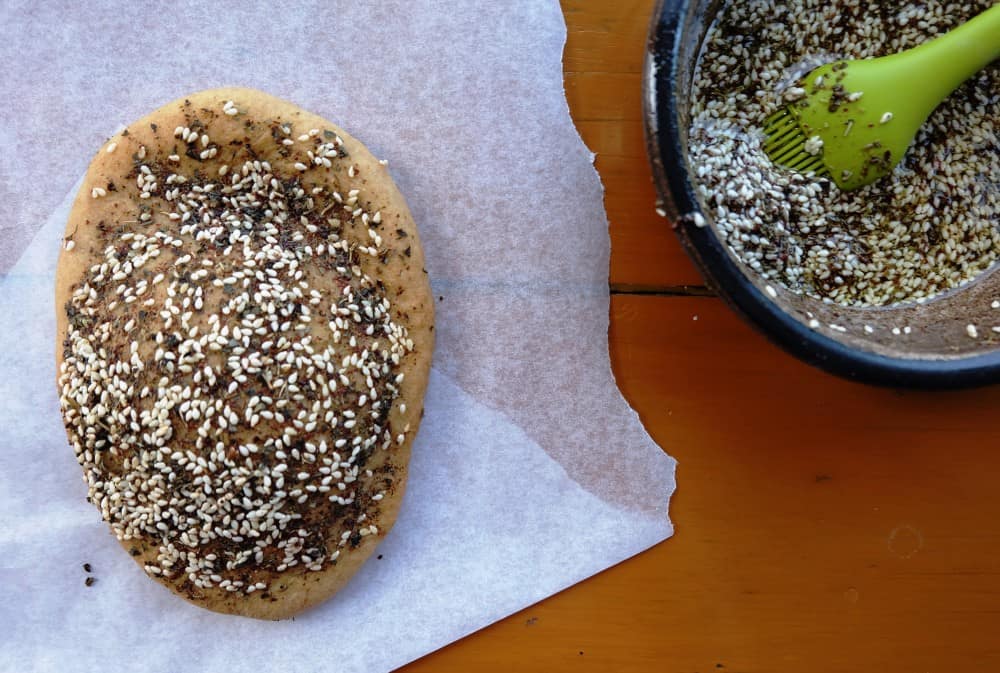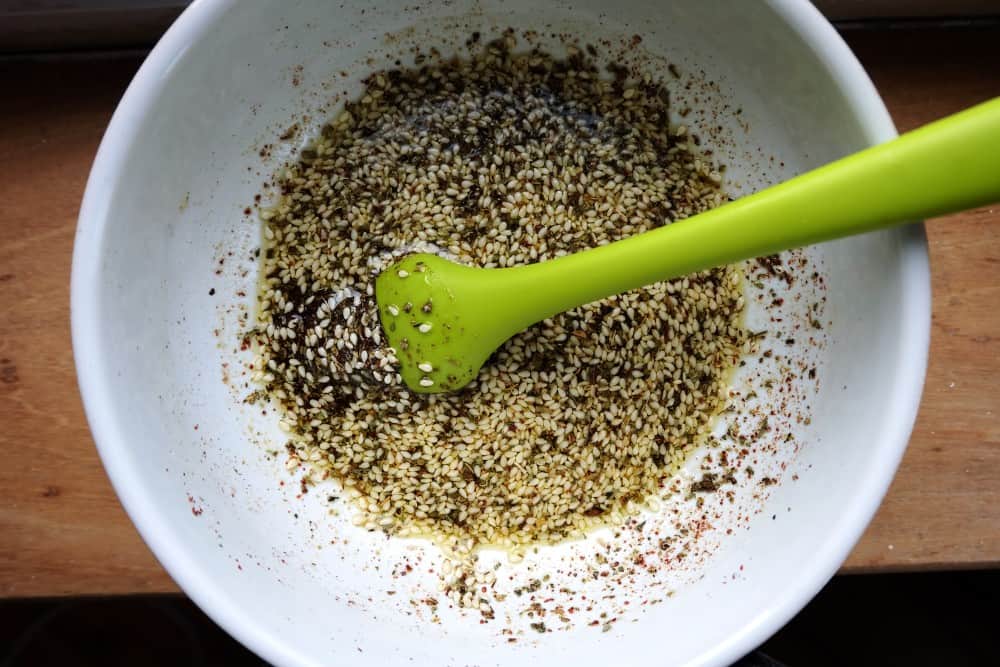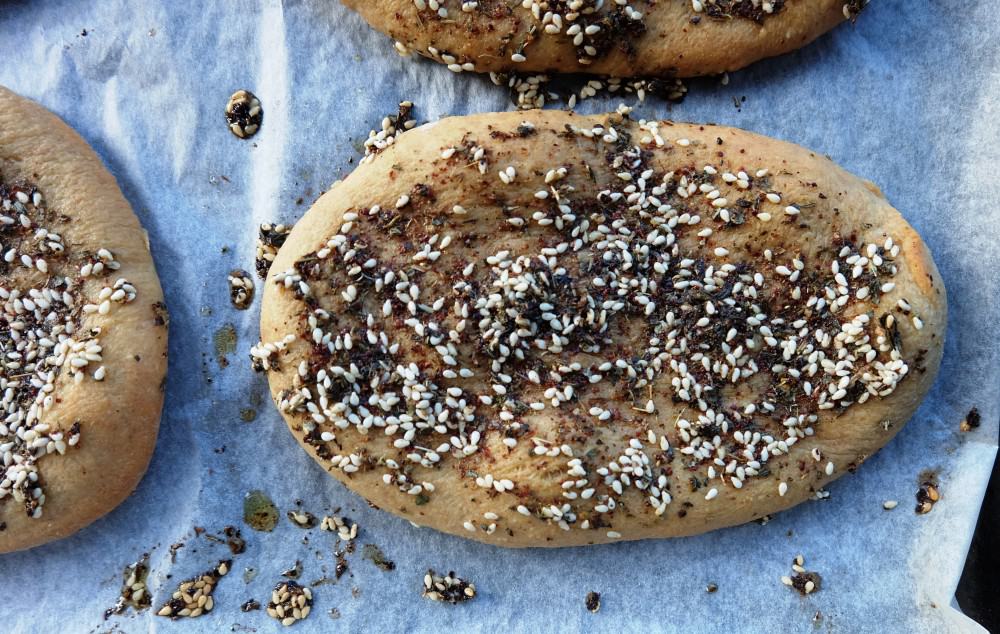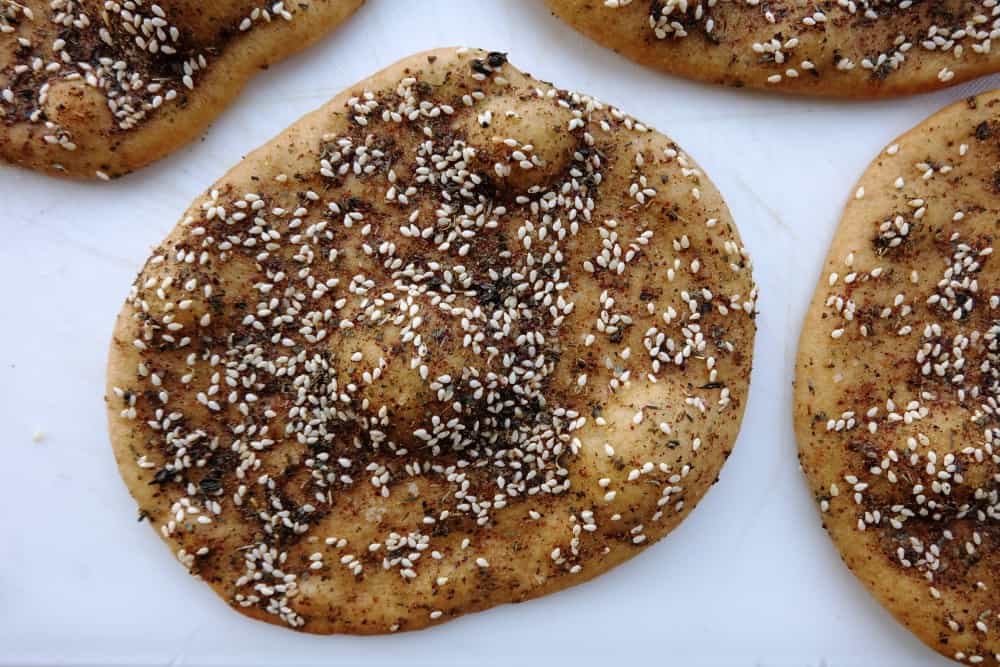Last week, an invitation to a Lebanese food themed dinner party was quickly followed by the kind request to supply suitable Lebanese flatbreads. I was more than happy to oblige by baking a batch of manakish za’atar!
On the menu was a fantastic spread of delicious Lebanese mezze from homemade labneh and tabbouleh to baba ghanoush followed by a main course of lamb meatballs in a spinach and yoghurt sauce. So, off I went on the search for matching breads. Having never been to Lebanon I had to base my research on recipes from books and other bloggers’ experiences.

I found a great variety of Lebanese flatbreads including:
- Markouk (very thin large circular flatbread baked on a domed griddle called saj)
- Tannur bread (cooked in a tandour-like oven)
- Manakish (chewy flatbread with a variety of toppings)
- Mishtah (thick golden-brown bread made with burghul, flour and aniseed)
Manakish (also manakeesh or manaeesh) seemed to be most feasible in the absence of a saj or tandour oven and also the most versatile.
This is my version of manakish za’atar – an attempt to evoke the flavours of Lebanese cooking in my Northern European kitchen. I was helped by a fellow baker who shared her copy of Barbara Abdeni Massaad’s stunning book Man’oushé: Inside the Street Corner Lebanese Bakery for inspiration.
Manakish Za’atar Recipe (Lebanese Flatbread Recipe)

Ingredients
- For the manakish dough – For my Lebanese flatbread recipe, I work with the same dough ingredients as used in my pita bread recipe.
- For the Lebanese za’atar paste – In the absence of the essential herbal ingredient za’atar (wild thyme), I used 4 tbsp fresh oregano leaves, 2 tsp dried thyme and 2 tsp dried marjoram, added 4 tbsp toasted sesame seeds, 2 tbsp ground sumac,1/2 tsp ground cumin, 1/2 tsp salt. Combine in a small bowl and mix well with 6 tbsp olive oil.
- Sea salt flakes

“Za’atar is a cornerstone of Levantine cooking. The herb grows wild in the hills around Jerusalem, and has a distinctive, pungent, savoury aroma. Its scientific name, Origanum syriacum, hints at a connection to oregano, marjoram and the like, but, for me, its flavour evokes cumin, lemon, sage and mint.” Yotam Ottolenghi

How to make manakish flatbreads
- This makes 8 flatbreads
- Follow steps 1 – 9 of my pita bread instructions.
- Turn the dough out onto a lightly floured work surface, deflate gently, then divide into eight equal pieces.
- Shape each dough piece into a firm ball, cover with a tea towel and let rest for 20 minutes.
- Preheat the oven to 200°C and place the baking tray at the bottom shelf to heat up.
- Flatten each ball, then roll – one by one – into a round or oval shape about 3 mm thick.
- Place the dough rounds on baking paper measured on your baking tray. Only four manakish fit onto my baking tray, so I roll out four at a time and while they’re baking I get onto the next four.
- Brush the breads with 1-2 tbsp of the za’atar blend, spreading it to within 5mm of the edge.
- Sprinkle with sea salt flakes.
- Slide the baking paper with the flatbreads onto the hot baking tray, place back on the lowest shelf in the oven and bake until lightly golden, for about 10 minutes.
- Remove from the oven and place on a wire rack.
- Serve while warm.
